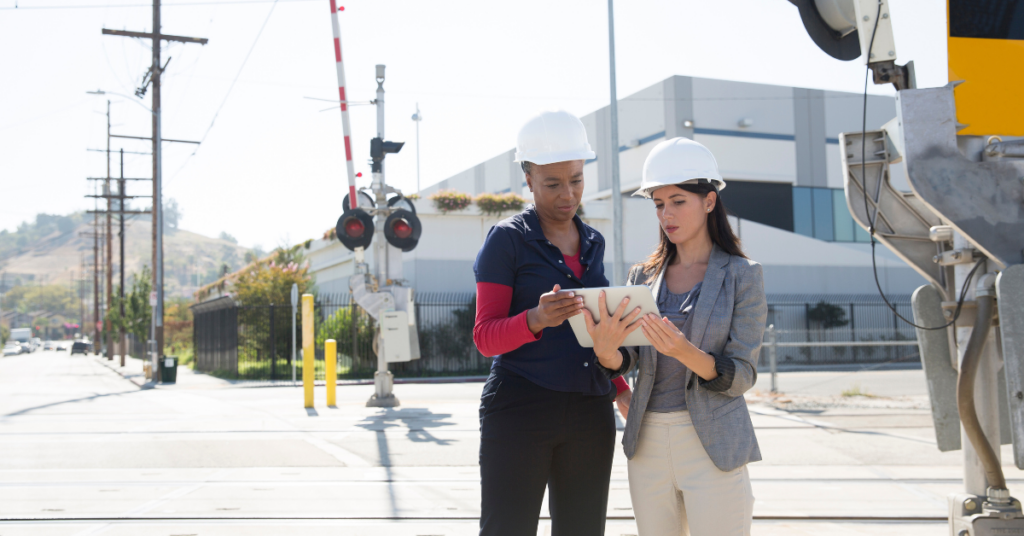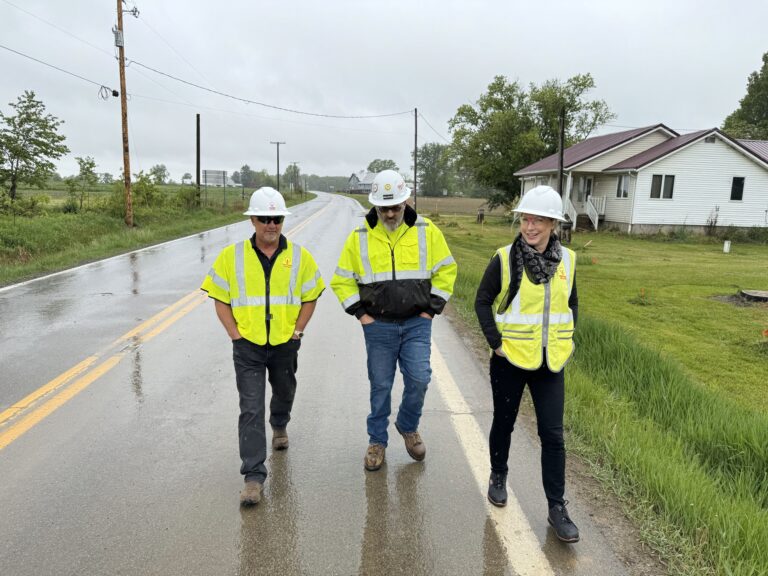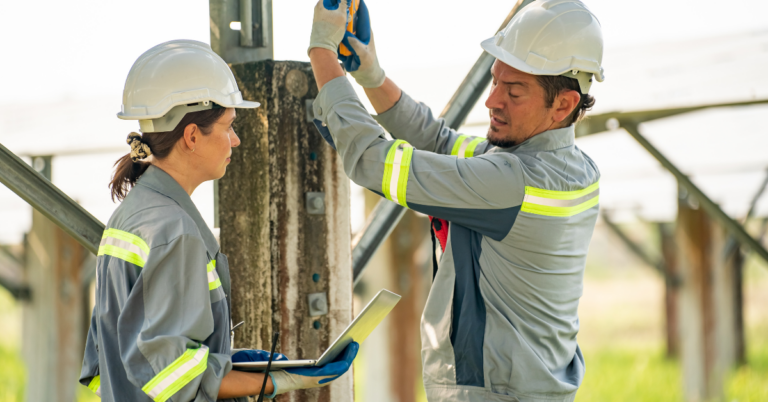Too many engineering designs are created in silos—perfect on paper, but problematic in practice. Maybe it’s a component that can’t be accessed for future maintenance. Maybe it’s a cable routing that looked clean in CAD but clashes with field-installed conduit. Or maybe it’s a spec that doesn’t reflect permitting realities on the ground.
This disconnect usually stems from two things:
- Limited field exposure during design.
- A lack of feedback loops from construction and operations back into engineering.
When designers work purely from plan sets, satellite maps, or legacy drawings without walking the site or talking to field crews, they miss critical nuances—grade changes, utility conflicts, limited access roads, staging limitations, or even local permitting quirks that can derail a seemingly solid plan.
These oversights aren’t always due to lack of skill. Often, it’s a lack of alignment between teams. Engineering is pushed to meet deadlines, and construction inherits the result. If the design doesn’t work in the field, the field adapts—through RFIs, redesigns, or workarounds. But all of that comes at a cost.
The Cost of Misalignment
Every unbuildable detail, inaccessible valve, or ambiguous drawing translates into time lost. And in infrastructure work, time is money.
- Change Orders: When a field team hits a roadblock that wasn’t accounted for in the design, the response is often a change order. What could have been resolved with better upfront planning now becomes a schedule disruption and a cost premium.
- Rework: One of the most wasteful outcomes in construction. Redoing work due to design errors or misinterpretations wastes material, labor, and trust.
- Operational Inefficiencies: Designs that overlook access, redundancy, or standard field practices often create headaches for the long-term operators. Systems may be functional but are harder to maintain, troubleshoot, or expand down the line.
- Safety Risks: Poorly considered designs can introduce real hazards—from confined work areas to unclear grounding paths or improper clearances.
This isn’t theoretical. It’s happening on job sites every day across the country. And as project complexity grows, so does the impact of poor alignment.
What Field-Aligned Engineering Looks Like
Field-aligned engineering doesn’t mean perfection—but it does mean proactive collaboration and continuous calibration. Here’s what it involves in practice:
1. Early Constructability Reviews
Before a design is finalized, someone with field knowledge should challenge it. Not to poke holes, but to ensure the plans reflect the real-world logistics of building it. Are materials accessible? Are work zones safe? Is the installation sequence logical? These questions, asked early, prevent problems later.
2. Cross-Disciplinary Teaming
Design shouldn’t live in a vacuum. Engineering, construction, permitting, safety, and O&M should all have a seat at the table. Their input—especially when gathered early—can surface constraints that inform smarter design decisions.
3. On-Site Validation
Whenever possible, engineers should visit the job site—especially for greenfield projects or complex retrofits. There is no substitute for boots on the ground. It’s how you see the realities that CAD can’t capture: terrain conditions, neighboring infrastructure, actual right-of-way boundaries, and more.
4. Designing for Maintenance and Operations
It’s not enough to ask, “Can this be built?” We also have to ask, “Can this be operated and maintained safely and efficiently for the next 30 years?” That means accounting for clearance, accessibility, replacement paths, and safe isolation procedures.
5. As-Built Feedback Loops
Once construction is complete, close the loop. What worked? What didn’t? What did field crews have to change? Feeding this back into future design cycles sharpens the institutional memory and reduces recurring errors.
Why It Matters More Than Ever
The push for field-aligned engineering isn’t new—but it’s more urgent now for several reasons:
1. Infrastructure Is Getting More Complex
We’re integrating renewables, storage, real-time monitoring systems, and automation into aging grids. Every system we design today must coordinate with legacy infrastructure and anticipate future adaptability. That adds layers of interdependence—and more ways for things to go wrong if the field isn’t accounted for.
2. Timelines Are Shrinking
With demand surging for new substations, transmission upgrades, broadband rollouts, and energy infrastructure, utility timelines are more compressed than ever. That leaves less room for redesigns. Getting it right the first time is no longer a bonus—it’s a requirement.
3. Regulatory and Public Scrutiny Are Rising
Projects today operate under a magnifying glass. Any delay, cost overrun, or safety incident draws attention—from regulators, communities, or investors. Field-aligned engineering helps de-risk projects from the start by reducing the chance of field surprises that spiral into public issues.
4. Labor Constraints Require Smarter Planning
Many utilities and contractors are facing labor shortages and skill gaps in the field. That means designs need to make installation and maintenance easier, not harder. Simplicity, clarity, and safety by design aren’t just ideals—they’re practical necessities.
It’s About Respect—And Responsibility
At the heart of this approach is a mindset: one that respects the field, and understands that success doesn’t end at the drawing board. A design isn’t successful because it got approved or looks good in 3D. It’s successful when the crew can build it safely and efficiently, and the utility can operate it reliably for decades.
That means asking more questions, listening more closely, and closing the loop between what’s envisioned and what’s executed. It’s not just about reducing RFIs or hitting milestones—it’s about delivering infrastructure that works.
Designing With the End in Mind
In this industry, we don’t just design projects—we design public trust, community resilience, and long-term performance. When we design for reality, we design for all of it.
Field-aligned engineering isn’t a luxury—it’s the baseline for reliable delivery in today’s environment. The sooner we align our technical decisions with the people and processes that bring them to life, the more we build not just infrastructure—but confidence in how it’s delivered.
Think Power Solutions partners with utilities, EPCs, and critical infrastructure owners to ensure design and construction teams work in sync—reducing rework, improving timelines, and aligning engineering with what’s real. To learn how we support field-aligned execution across transmission, distribution, and utility-scale programs, reach out to us today.



